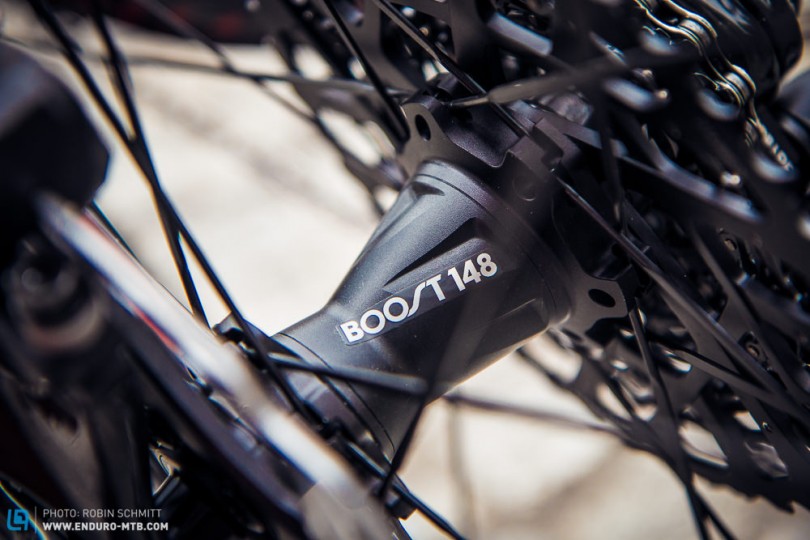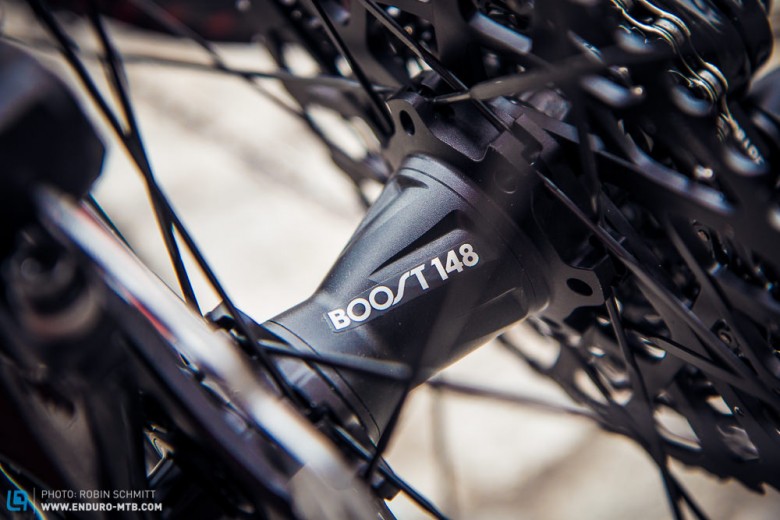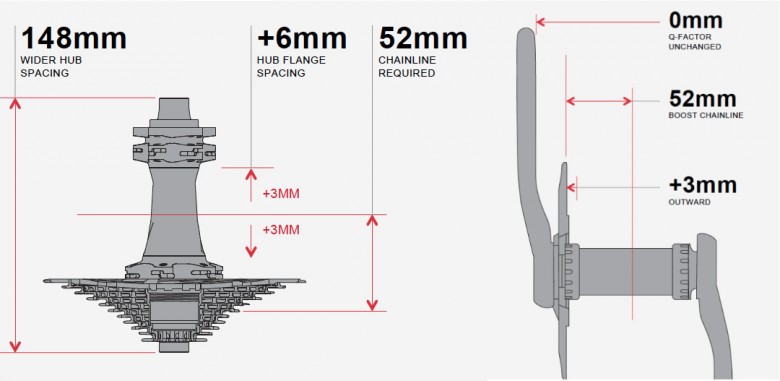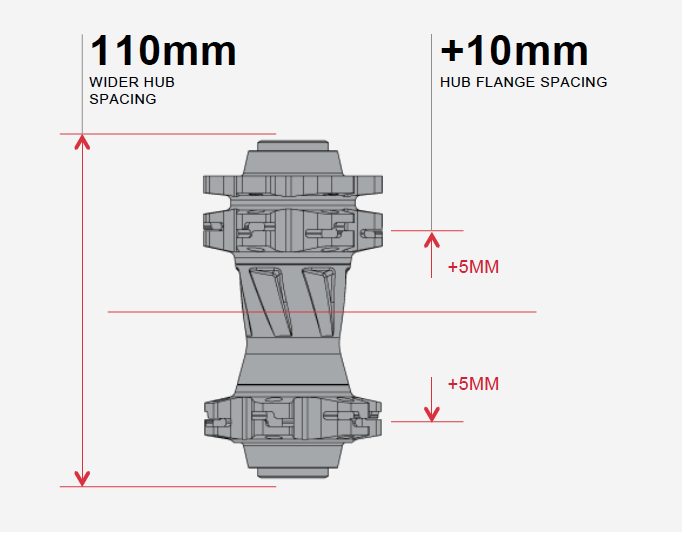Tech Talk | What’s the Boost standard all about?

The bike world has been thrown into uproar once again with the entrance of yet another new standard. What is it, you ask? Boost! You first heard about Boost when we reported on Trek’s new line. Back then it seemed like it was just a new standard for your rear axle, but now even Fox and SRAM/RockShox are opting for wider hubs on front wheels, and Boost seems to be making its mark on the entire mountain bike setup. We’ve found out what’s behind this new technology and where it might lead.

Granted, it might seem minor; the Boost 148 is just three millimetres wider on each side than the current widespread and established 142m standard. But these precious millimetres change much more than just the width of your axles. When the rear spacing grew from 135mm to 142mm a few years ago, they were just widened and as a rider it wasn’t an issue to upgrade your wheels to the new standard with a conversion kit. However, it’s a different story with the Boost! The extra six millimetres on the rear hub, and the extra 10 mm on the front hub, have been added to give a greater flange offset. While this offers certain advantages, it does affect the position of your disc brakes and cassette, and mean that you’ll need specific forks and cranks – or at least specially altered Spider/chain rings.
The advantages of Boost
One advantage of the now wider axle standard is glaringly obvious: given the wider hub flange, and the stronger spoke-bracing angle, the stiffness and stability of the wheel is massively enhanced. According to stats from the manufacturers, a 29″ rear wheel with a 148mm hub has the same stiffness as a 27.5″ wheel with a 142mm hub. But, as SRAM promise, Boost brings yet more advantages:
- The increased stiffness results in more effective and more precise bike handling.
- Given the wider rear wheel, a shorter chain stay can be used.
- Suspension pivots can be placed wider apart and therefore stiffer.
- The wider rear hub offers you a bigger choice when it comes to chainrings.
- And finally, Boost improves clearance on the forks and the rear.
The compatibility of the Boost 148 rear wheels and crankset.
As we’ve already mentioned, the Boost system alters the position of the cassette, which results in a change in the chainline. To guarantee the same drivetrain performance, Boost compatible cranks are absolutely necessary, or directly mount the Boost-specific chainring Spider. This offsets the drivetrain by 3mm to equalize the cassette’s movement. The cranks’ Q factor remains unaffected, as too do the axle and bearings.



Boost 110 at the front
As the advantages of the wider spoke flanges are obvious, and more and more companies are dedicating their time to plus-size bikes, it is only natural that their thoughts turned to front wheel axles to create room for bigger tyres, thereby increasing stiffness. With the front hub flanges moved out, the hub becomes 5mm wider on each side. According to SRAM, a 29″ wheel with 110 x 15mm thru axle will have the same stiffness as a comparable 26″ model with 100 x 15 mm axle. Pretty impressive!

Of course, to accommodate the wider hubs, the broader the casting of the forks has to be, just like Fox and RockShox are set to launch soon. However, it won’t be possible to use spacers to alter the 100 x 15 mm hubs, as the disc brake rotor also undergoes a shift in its position.
Our opinion:
Riders often recoil from new standards like the plague. But one thing is for sure – without these new standards and advancements, cycling wouldn’t be what it is today. We’d probably still be riding with caliper brakes and rigid forks – let alone thinking about dropper seatposts. So, from this perspective, new developments should be seen in a positive light! Simon Cittati (Brand Communication Manager at RockShox) reassured us that with these new Boost-compatible components SRAM/RockShox are giving bike manufacturers the opportunity to create the best possible bike, while making sure that components are still made available for the old standards. “We’re even still offering a 26″ Pike,” he said in our interview. At the end of the day it’s the customer at the till who decides whether or not Boost becomes the next generation – in our eyes, there’s no reason for it not to!
Words: Christoph Bayer | Pictures: Robin Schmitt, PR SRAM
Did you enjoy this article? If so, we would be stoked if you decide to support us with a monthly contribution. By becoming a supporter of ENDURO, you will help secure a sustainable future for high-quality mountain bike journalism. Click here to learn more.








